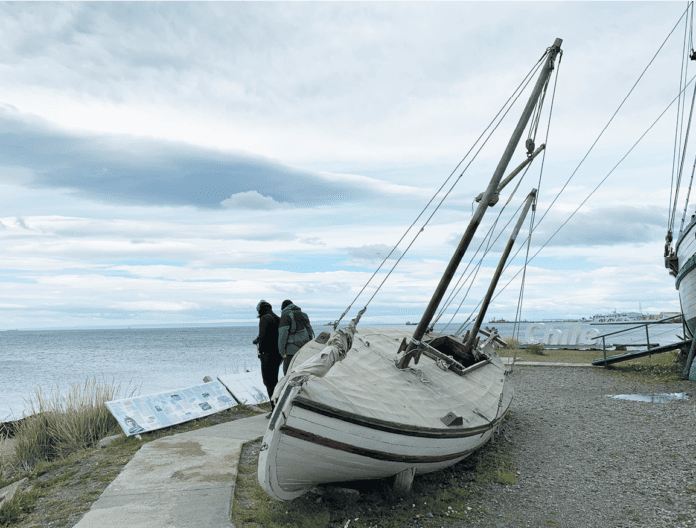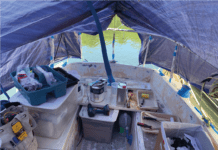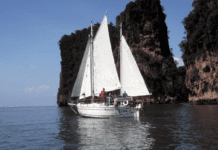n early March, as the short austral summer was ending, I stood beneath a red-and-white striped lighthouse at the southern tip of South America. Sitting on weathered beech stump in the lee of the abandoned light, I watched through binoculars as a bright red sloop rounded Cape San Isidro on its way west through the Magellan Strait.
To reach this remote place, my partner, Erin McCormick, and I drove to the end of Route 9—the Route to the End of the World—and then hiked for three hours along a rugged, windswept coast. How strange that we’d reach the light at almost at the exact moment that a sailboat, so rare in these parts, was laboring past.
It was Icebird, a custom Van de Stadt 61, returning from another adventure to Antarctica. The bare spars on the innovative Aero rig stabbed at the sky as the boat powered into a 25-knot breeze, throwing off spray. The boat could have easily tacked up the strait, but it had a schedule to keep. The motor’s hum carried in the wind.
The next day, while Icebird rolled and bucked at anchor in Punta Arenas, an open roadstead exposed to the straits, Erin and I drove west to visit the replica of a much different boat also known for its Antarctic adventures, the James Caird.
The James Caird was one of three small boats that famous Antarctic explorer Ernest Shackleton and his crew salvaged from the Endurance before the frozen Weddell Sea crushed it 1915. Measuring just under 23 feet, the double-ended whaling boat carried Shackleton and five crew more than 1,000 miles across the Furious Fifties to South Georgia Island. Anyone who still believes that size alone determines a boat’s seaworthiness would do well to read at least one account of the James Caird’s incredible voyage.
The sight of two very different boats built to survive the same inhospitable waters made me think again of the passage of our own stout voyager—a vessel that you have helped build. Next month, Practical Sailor, a small, but mighty publication constructed of ink, paper, and decades of sweat, will make her last passage as a print publication—50 years since first setting out.
Instead of being forced to convert an old whaler into a lifeboat, we’ve been busily fine-tuning the equivalent of a modern polar explorer like Icebird, and now she is ready to launch. The mode and master will be different, but the mission hasn’t changed. Not only will the all-digital version of Practical Sailor be able to venture to places we could not go before (video will play key role in the new PS), it will be better equipped to weather the storms that come.
I have no doubt that some readers will lament the loss of their favorite print magazine, but we’ve not made it this far by running blind when the weather turns foul, or by stubbornly holding a course toward a lee shore. Making better use of technology to inspire sailors around the world, the new PS is shipshape and ready to help you chart your own great adventure.










































